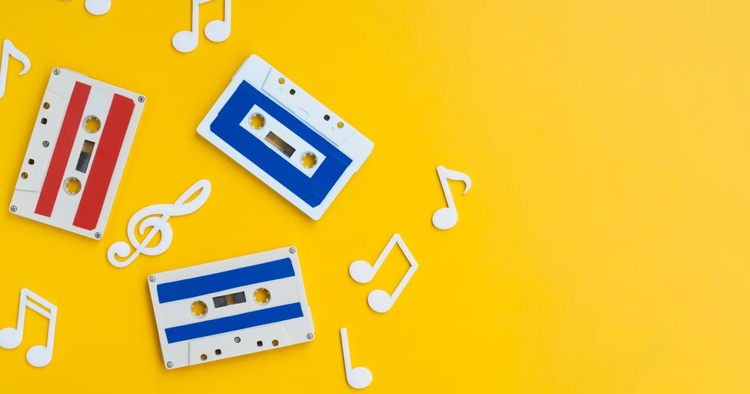Teaching English as a Second Language (ESL) to young learners can be a daunting task, especially in the age of online teaching. However, incorporating ESL songs into your lessons can be a fun and useful way to engage young learners, teach new vocabulary, and introduce grammar rules. In this article, we explore the benefits of using songs in ESL teaching, popular ESL songs for young learners, creating effective lesson plans, and teaching tips for online teachers.
Why Use ESL Songs for Young Learners?
Benefits of Using Songs in ESL Teaching
Songs can help make your ESL lessons more enjoyable and effective for young learners. Not only do they entertain, but they can also help improve language learning outcomes. When young learners listen to songs, they engage in listening, speaking, and comprehension activities. Moreover, songs also allow young learners to learn and practice new vocabulary, sentence structures, and grammar rules in a fun and engaging way.
How Do ESL Songs Help Young Learners?
ESL songs offer a different educational experience than traditional teaching methods. Kids are naturally drawn to music, which can help capture and retain their attention. When songs are used in ESL classes, young learners will enjoy listening and singing along with the lyrics. As a result, they will be more motivated to learn new words and structures that they might otherwise resist. Additionally, ESL songs help children in developing listening and speaking skills, increase their vocabulary, and strengthen their pronunciation.
How to Incorporate ESL Songs into Lessons?
Incorporating ESL songs into lessons is easy. Teachers can use them to introduce new vocabulary, pronounce difficult words, clarify grammatical structures, or just for fun. There are many songs available on the internet, including popular nursery rhymes and educational songs created especially for young learners. Once you have chosen a song to use in your classroom, it's important to create activities that will engage young learners and make them want to sing along with the lyrics.
Popular ESL Songs for Young Learners
Head, Shoulders, Knees and Toes
Head, Shoulders, Knees and Toes is one of the most well-known and popular songs among young learners. It is an effective way to teach kids the parts of the body while also practicing English vocabulary and sentence structures. This song is useful because it is easy to learn the lyrics and melodies, and the movements that go along with the song helps in reinforcing the vocabulary.
Buckle My Shoe
Buckle My Shoe is another popular song that many young learners enjoy learning. It focuses on numbers, counting, and repetitive structures, which helps kids learn the language. It's also a fun song with easy-to-remember lyrics and active movements.
Sing a Rainbow
Sing a Rainbow is an excellent song for introducing colors and practicing sentence structures. Kids will enjoy singing this song and learning the names of different colors. It has simple lyrics and an upbeat tune, making it easy for young learners to learn and sing along.
Do You Like Broccoli Ice-Cream?
The original (and extremely ridiculous) food song "Do You Like Broccoli Ice Cream?" was written by Super Easy Learning to help teach children how to express their preferences for and dislikes of different foods as well as how to ask and respond to "Do you like _______?" queries.
Old McDonald Had a Farm
Old MacDonald had a farm. E-I-E-I-O.
And on that farm he had a pig. E-I-E-I-O.
With an oink oink here.
And an oink oink there.
This charming and well-known nursery rhyme from Super Easy Songs, Old MacDonald Had A Farm, will teach you how to create animal noises.
Six Little Ducks
Sing along to the Super Simple Songs version of the classic nursery rhyme. “Six Little Ducks”!
Wibble wobble wibble wobble,
quack quack quack…
How to Create an Effective Lesson Plan with ESL Songs
Planning Ahead: Choosing Songs and Activities
To create an effective lesson plan with ESL songs, it's important to choose the right songs that align with your lesson objectives and grade level. It's also important to plan activities that will help reinforce vocabulary, sentence structures, and grammar rules. Activities such as singing along, acting out parts of the song, writing lyrics, or creating a dance routine will help children engage with the song and remember new vocabulary.
Integrating Body Parts with ESL Songs
Using body movements and parts can help young learners understand the meaning of the lyrics in ESL songs. For example, you can have students point to the body parts mentioned in Head, Shoulders, Knees and Toes, or act out the lyrics using their bodies. This will help them develop a better understanding of word meanings and sentence structures in the songs.
Use of ESL Songs with Worksheets and Flashcards
Using ESL songs with worksheets and flashcards can reinforce language learning and make the lessons more fun. For instance, teachers can create worksheets that review vocabulary learned through the song or flashcards with pictures that correspond to the lyrics. Incorporating worksheets and flashcards with ESL songs can help students better remember vocabulary and grammar structures.
Teaching Tips for ESL Online Teachers
Engagement Techniques: Keep Young Learners Focused During Online Lessons
Teaching online can be challenging, but there are many techniques that online ESL teachers can use to keep young learners engaged and interested in the lesson. Techniques like asking open-ended questions, using visual aids, interactive slides, and making use of breakout rooms are just a few examples of ways to keep students engaged and focused.
How to Use Popular ESL Songs in an Online Classroom Setting?
Using popular ESL songs in an online classroom setting can be just as effective as in-person instruction. Teachers can share their screen showing the lyrics and music video, or have students sing along with their microphones on. Adding visual aids such as pictures, flashcards, and worksheets can further enhance the learning experience for young learners.
Where to Find Trusted Resources for Free ESL Songs for Kids?
There are many resources for free ESL songs for kids, including popular YouTube channels like Super Simple Songs, KidsTV123, and Dream English Kids. These Youtube channels offer a wide range of songs that are ideal for young learners. It's also a good idea to look for ESL songbooks online or to create your own.
Conclusion
Final Thoughts on ESL Songs to Engage and Teach Young Learners Online
ESL songs are a fun and effective way to engage young learners and to help them learn English. Using ESL songs can help develop conversation skills, improve vocabulary and pronunciation, and make learning fun and enjoyable. The key to success is to choose appropriate songs, plan engaging activities and incorporate the songs effectively into your lessons. With the right tools and techniques, teaching ESL online can be enjoyable and fun for both teachers and students.









